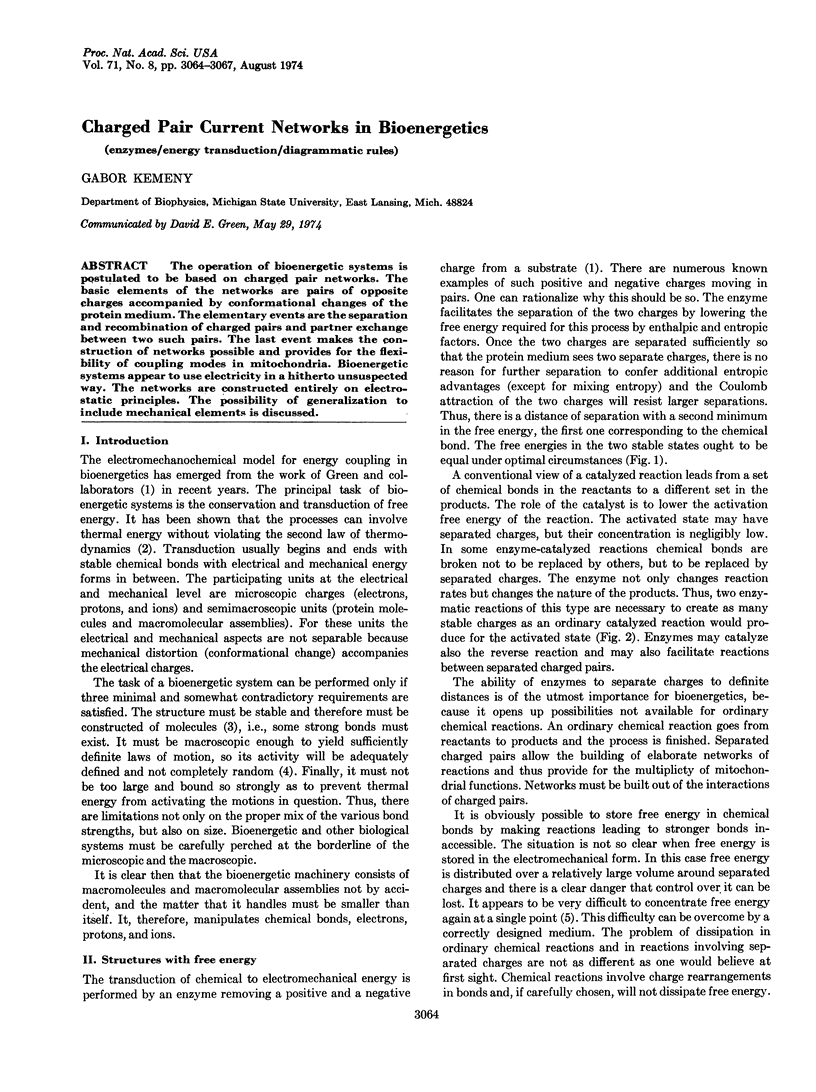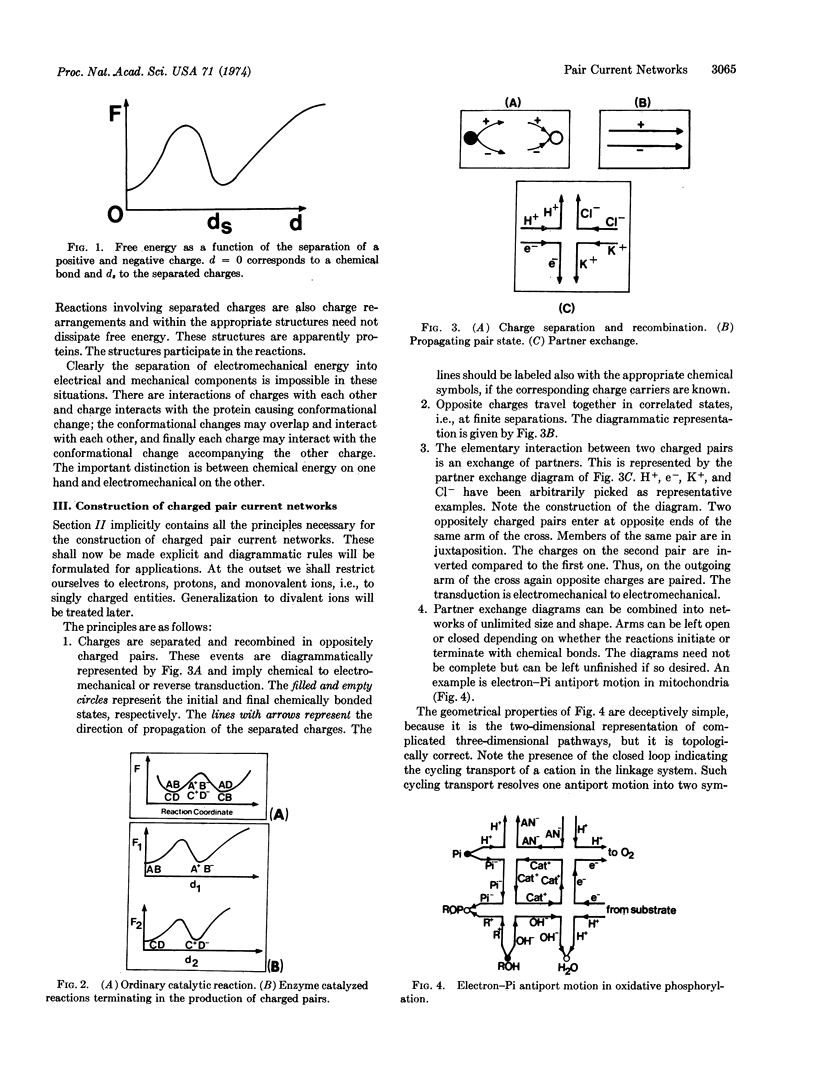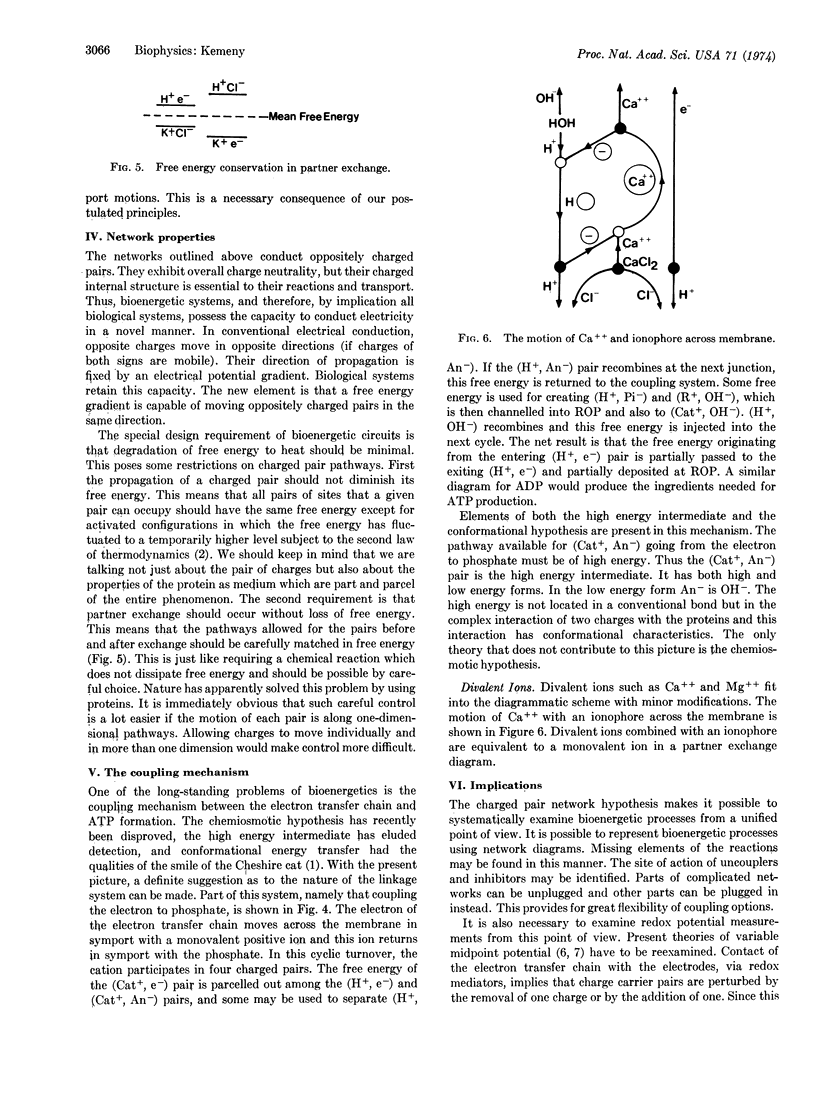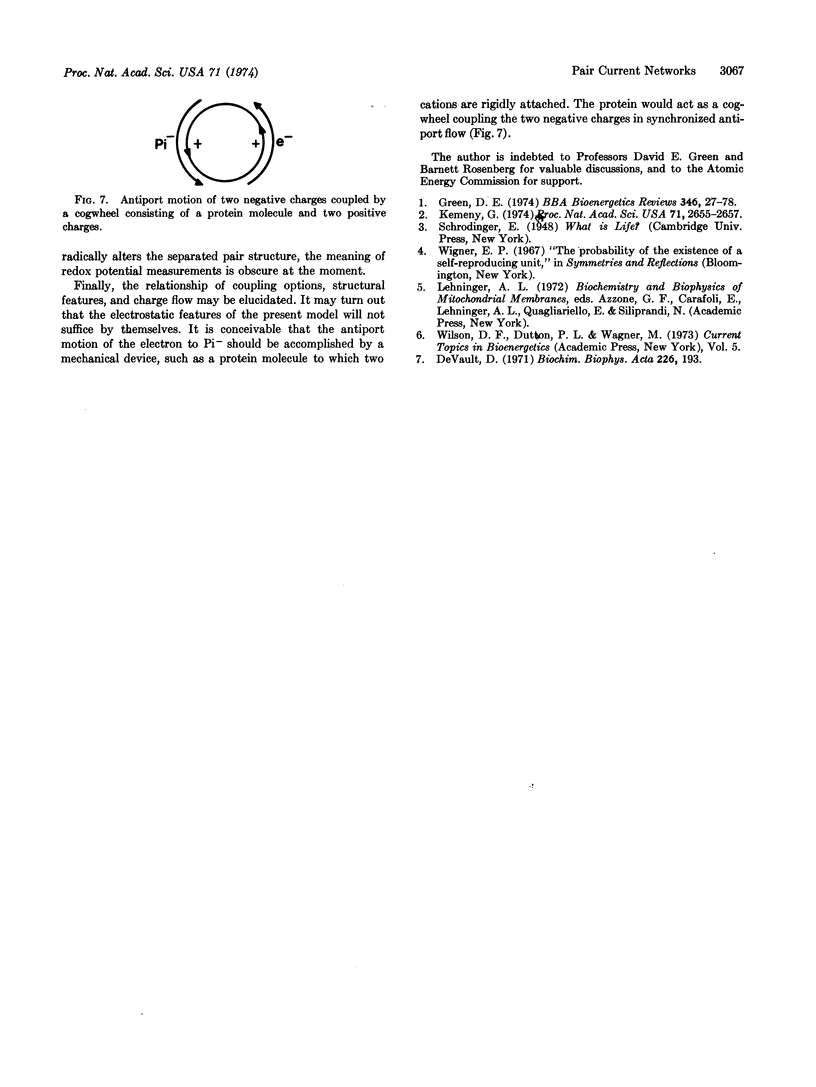Abstract
The operation of bioenergetic systems is postulated to be based on charged pair networks. The basic elements of the networks are pairs of opposite charges accompanied by conformational changes of the protein medium. The elementary events are the separation and recombination of charged pairs and partner exchange between two such pairs. The last event makes the construction of networks possible and provides for the flexibility of coupling modes in mitochondria. Bioenergetic systems appear to use electricity in a hitherto unsuspected way. The networks are constructed entirely on electrostatic principles. The possibility of generalization to include mechanical elements is discussed.
Keywords: enzymes, energy transduction, diagrammatic rules
Full text
PDF



Selected References
These references are in PubMed. This may not be the complete list of references from this article.
- Devault D. Energy transduction in electron transport. Biochim Biophys Acta. 1971 Jan 12;226(1):193–199. doi: 10.1016/0005-2728(71)90192-7. [DOI] [PubMed] [Google Scholar]
- Green D. E. The electromechanochemical model for energy coupling in mitochondria. Biochim Biophys Acta. 1974 Apr 30;346(1):27–78. doi: 10.1016/0304-4173(74)90011-1. [DOI] [PubMed] [Google Scholar]
- Kemeny G. The second law of thermodynamics in bioenergetics. Proc Natl Acad Sci U S A. 1974 Jul;71(7):2655–2657. doi: 10.1073/pnas.71.7.2655. [DOI] [PMC free article] [PubMed] [Google Scholar]


